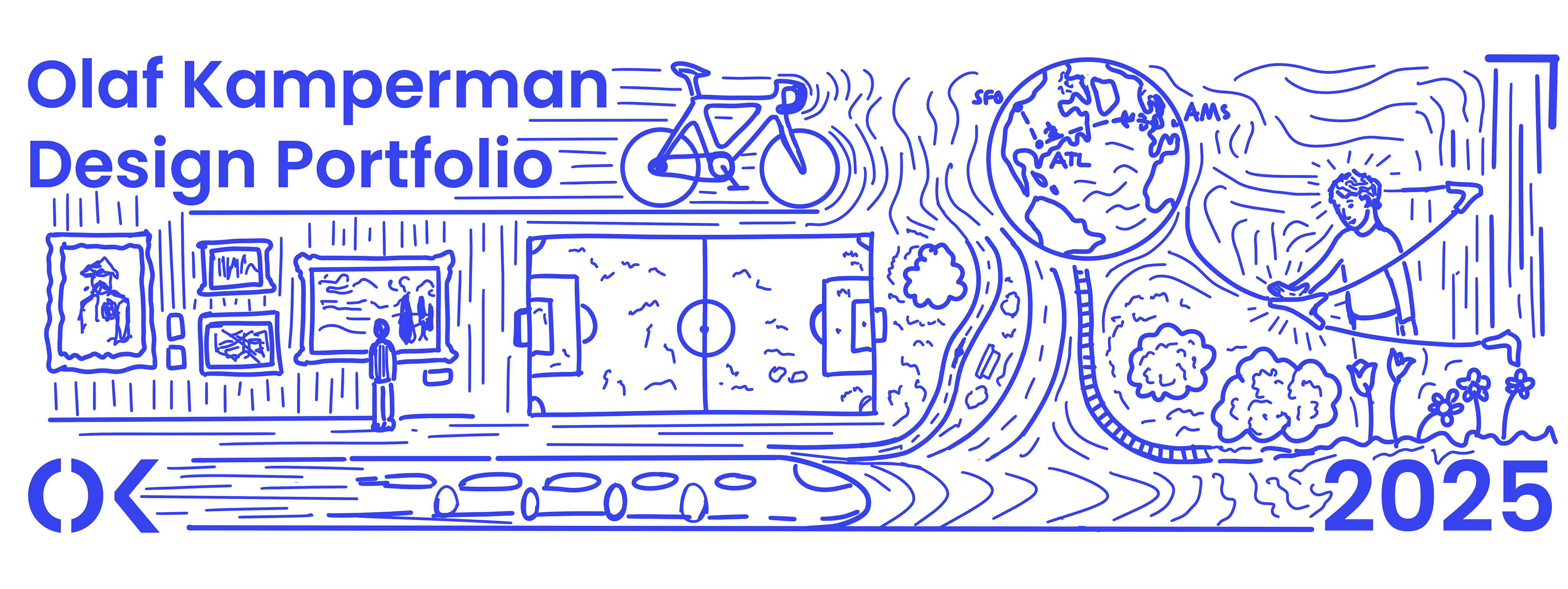Multicultural identities matter, especially now.
Circles of Self is an interactive exhibit where visitors can explore their cultural identities by creating a unique representation of themselves in their own new graphical language.
Senior Capstone Project.
Totally open-ended. Given my personal multicultural background and the current state of the world, I chose to design an interactive exhibit focused on multicultural identity.
January - April 2025. ID 4062. Lisa Marks.
Individual project.
My Role: Ideation, research, testing, presenting, and producing all final images and prototypes.
Tools: Figma, Fusion360, Rhino, Illustrator, Photoshop, Keyshot
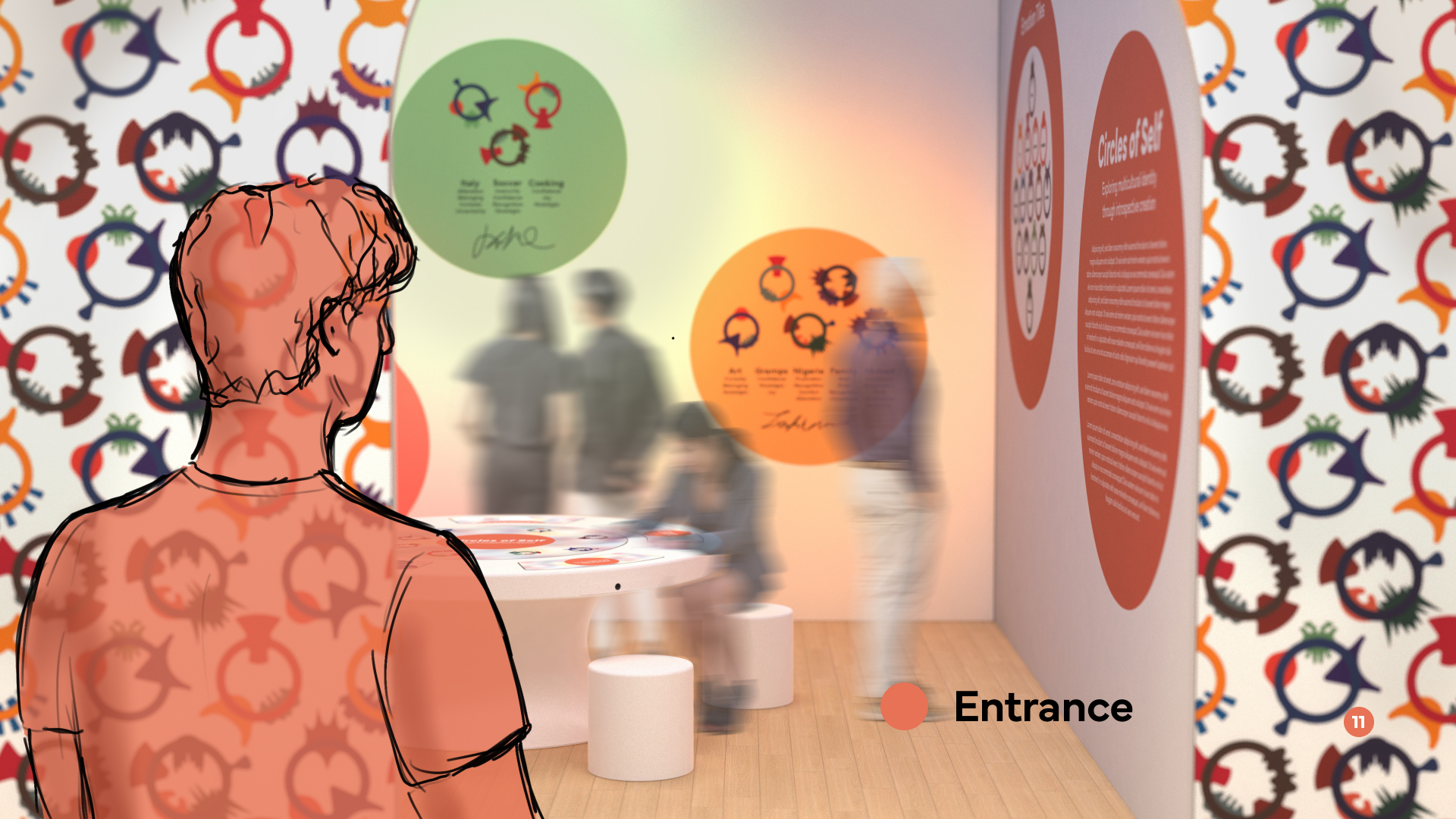
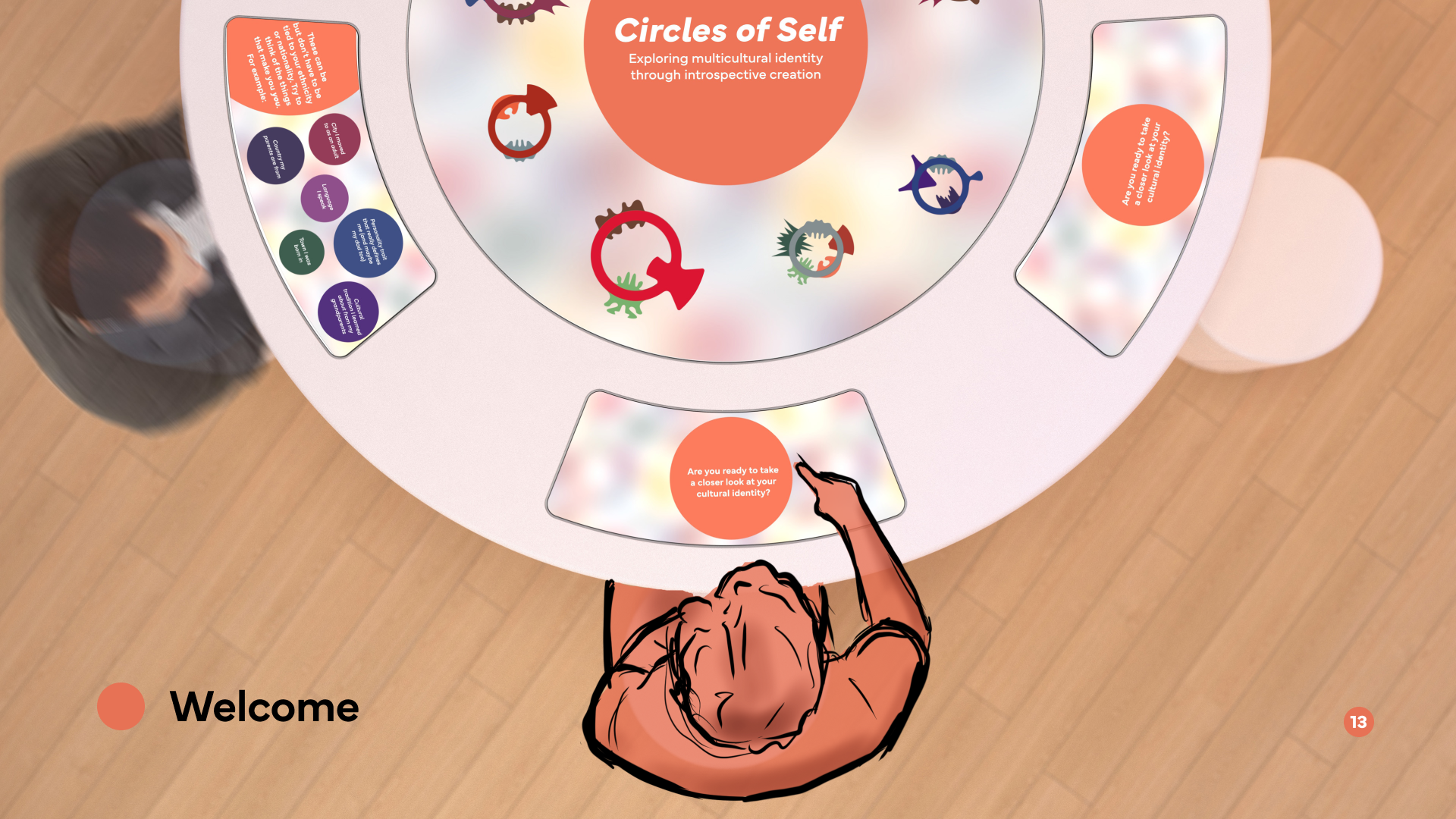
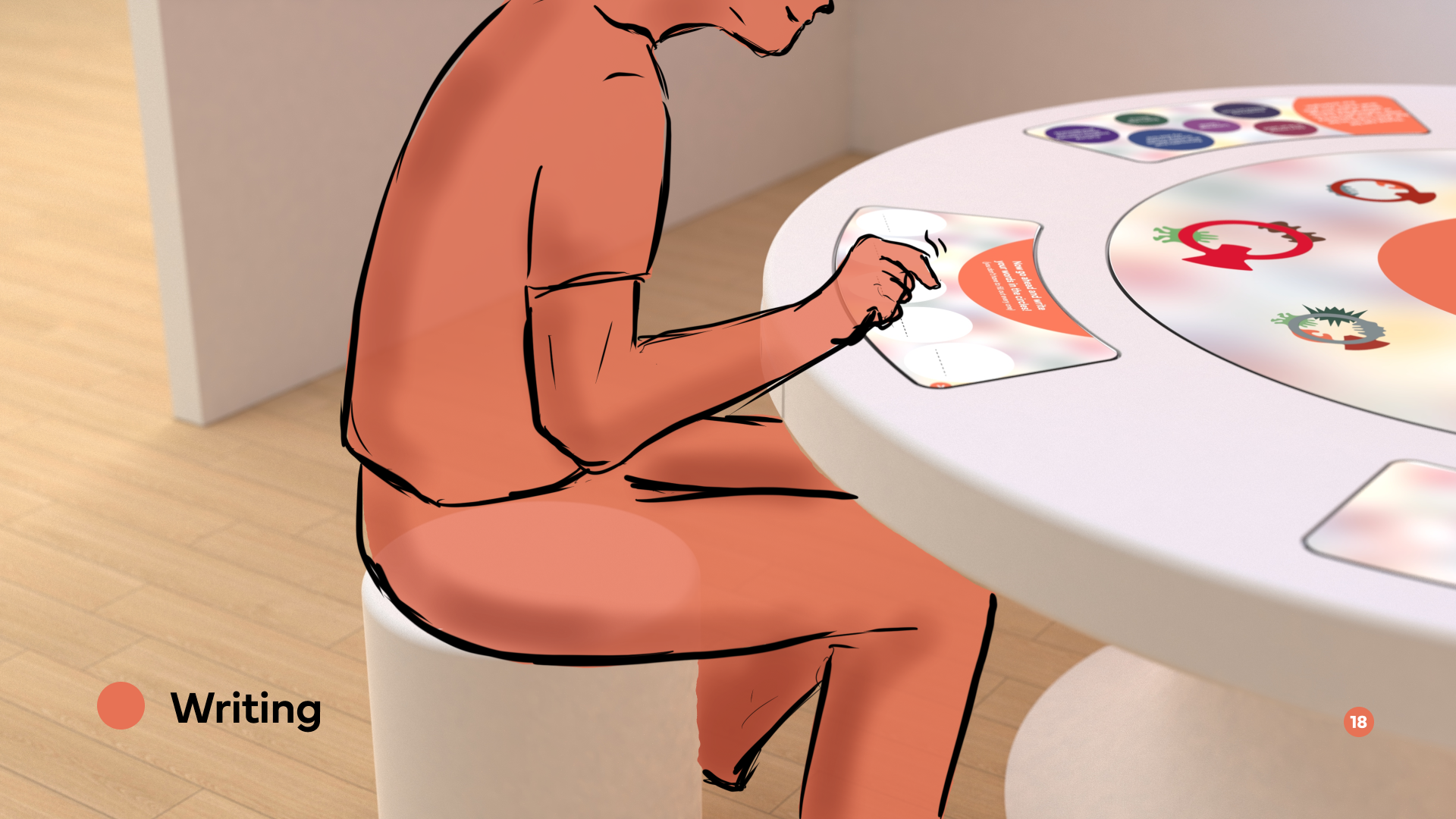

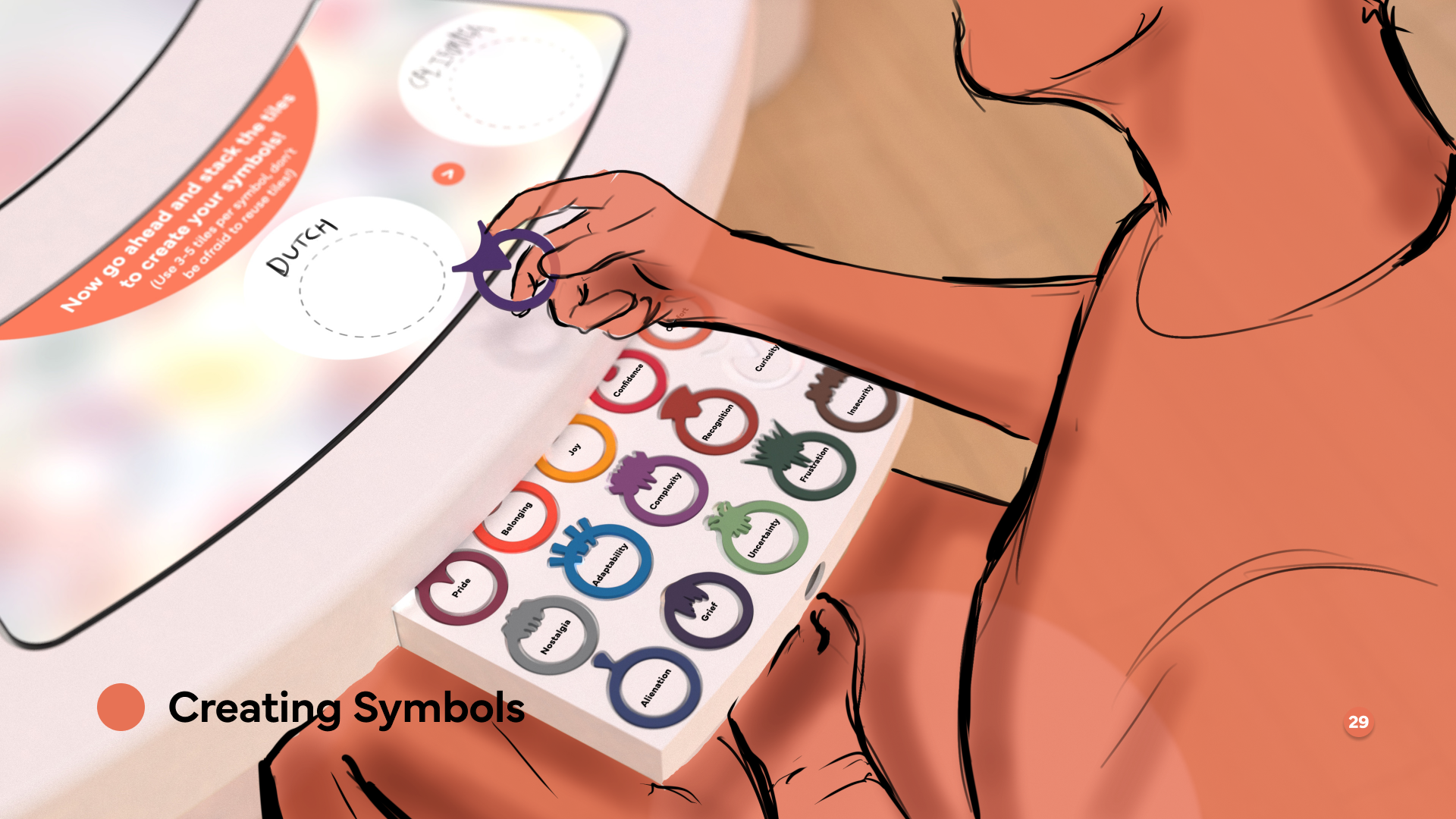
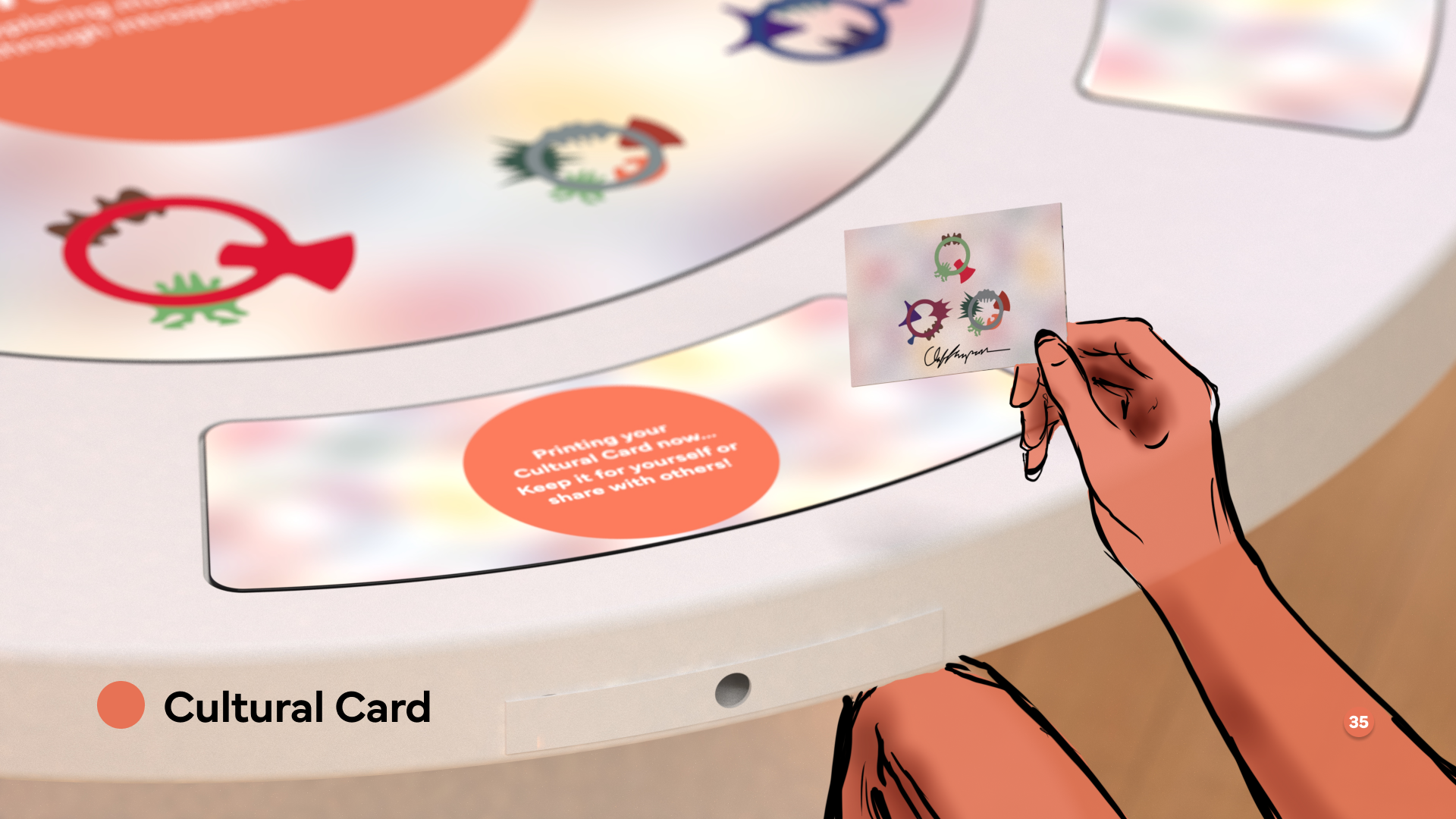
Through a series of prompts on a screen at the central roundtable and stacking physical emotion tiles to make symbols, visitors create a unique graphical representation of their identity. They can take it home in the form of a postcard, to proudly display or keep as a personal memory.
The goal is to have people with multiple cultural backgrounds — who often don't feel like they fully belong to any culture — get to know themselves a little better through this introspective creation.
Physical + Digital Prototype





Try it out!
Process
The project must have an international focus.
How might I create an interactive experience that meaningfully explores a global topic?
How could it draw on my personal multicultural experience and still tell a broader story?
What skills/tools do I want to learn or explore further?
I started with these rough parameters: for the International Plan degree requirement, the project had to have a global element, I wanted to create an interactive experience/exhibit, and I wanted to learn something.
I started by exploring and brainstorming options for these requirements.
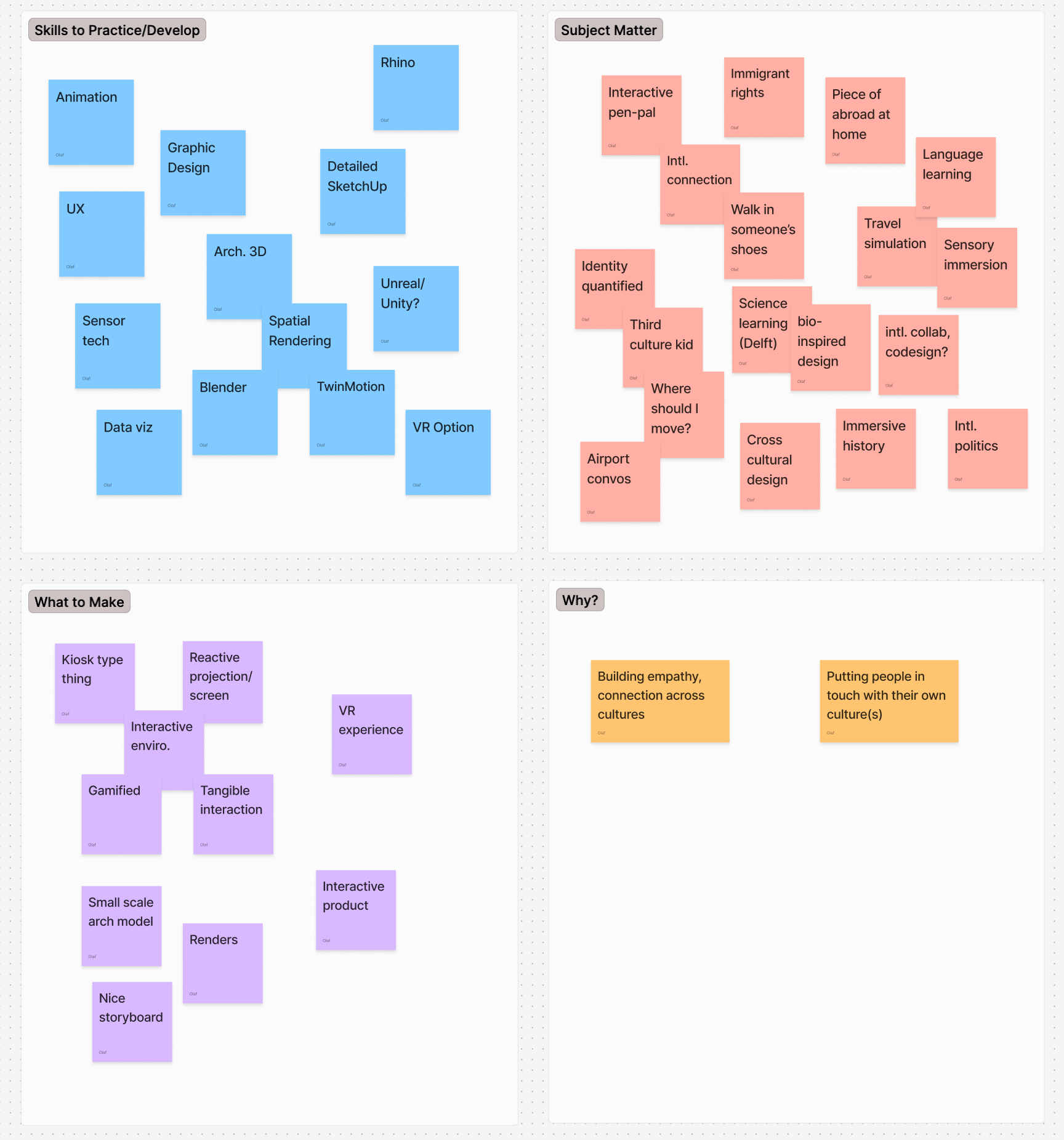



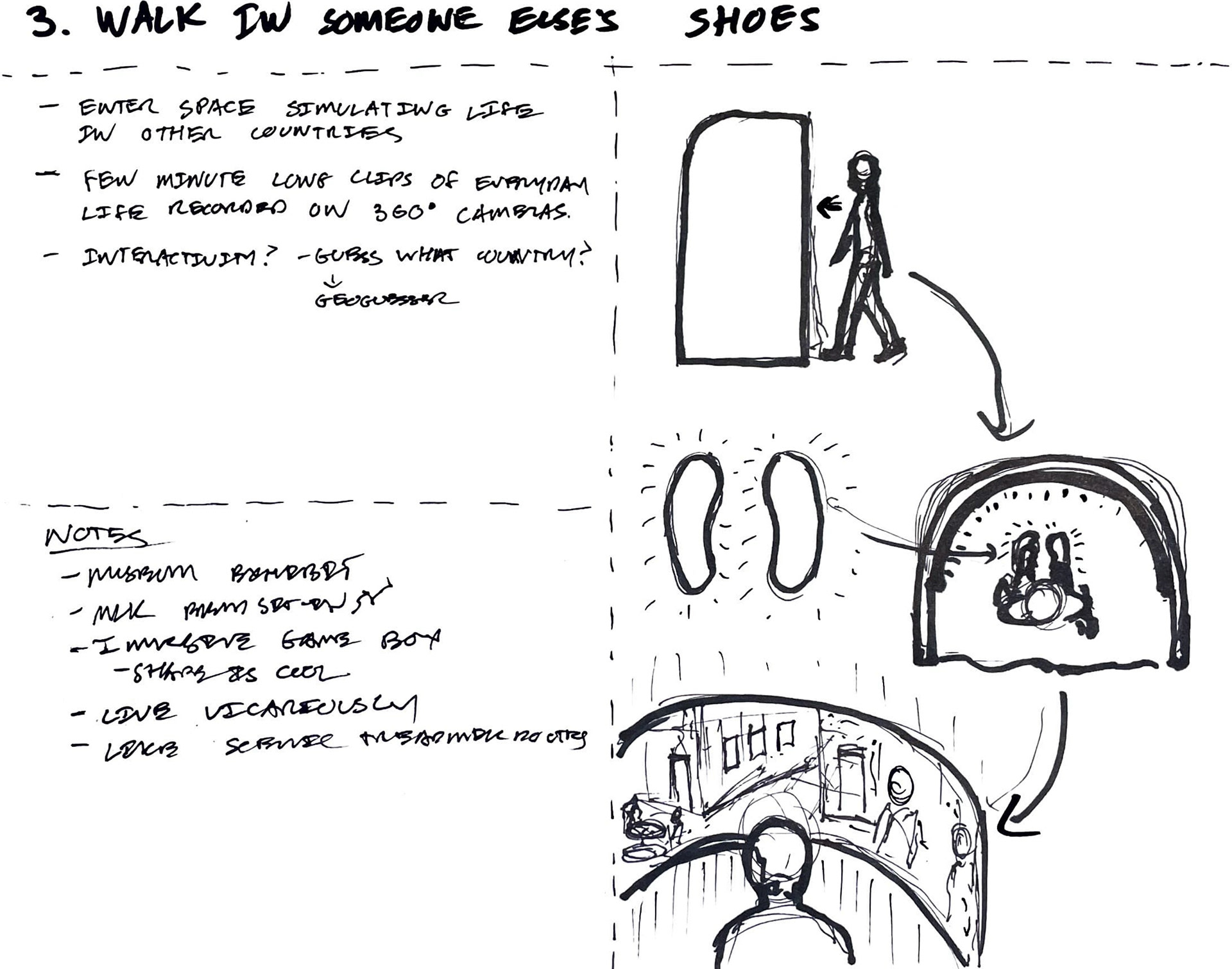



Early process consisted of a lot of brainstorming, secondary research, and sketching. Trying to figure out a direction to explore.
Any of the final 3 would have been worth doing, but the first — identity kiosk/putting people in touch with their own cultures — was the most inspiring and personally relevant.
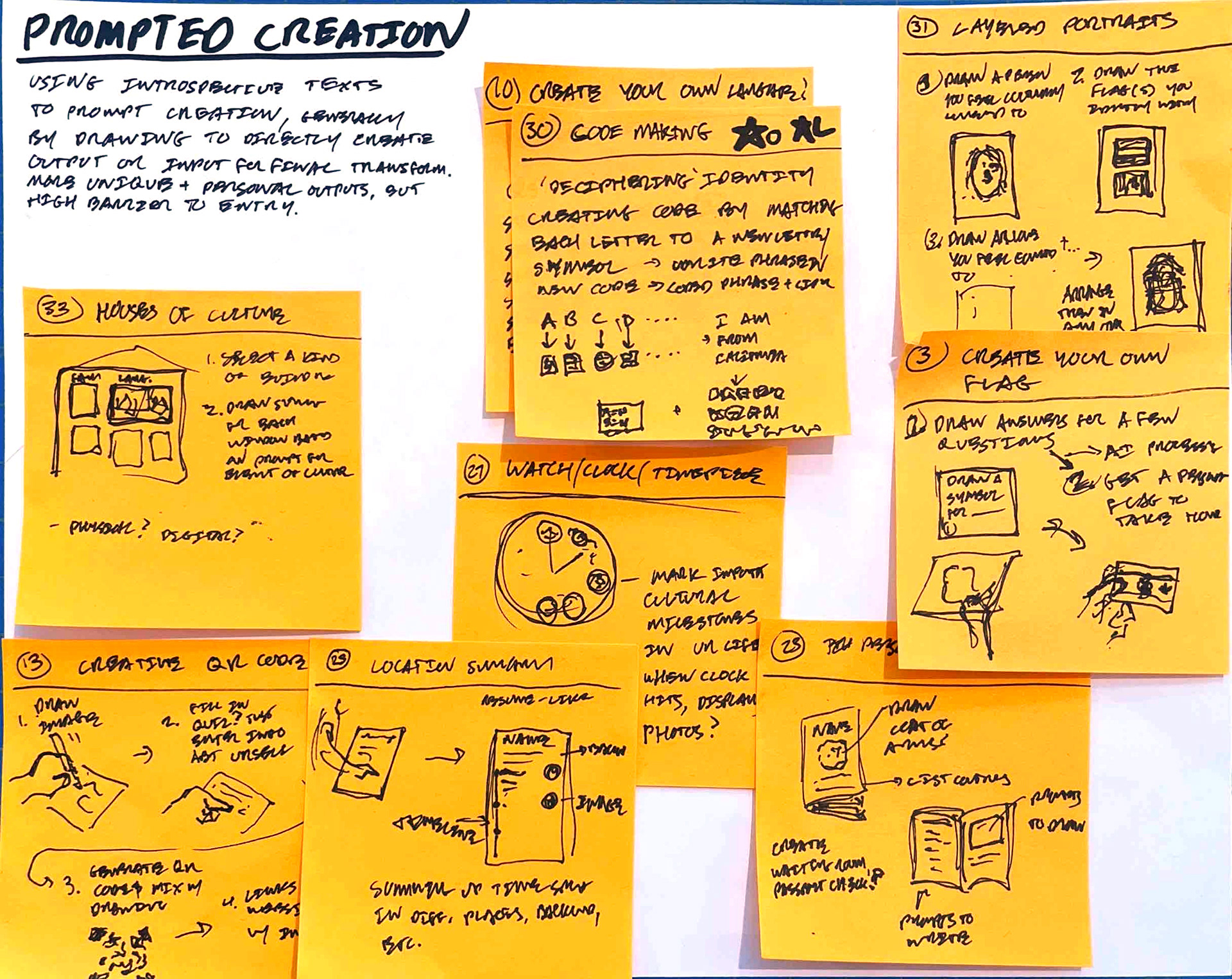

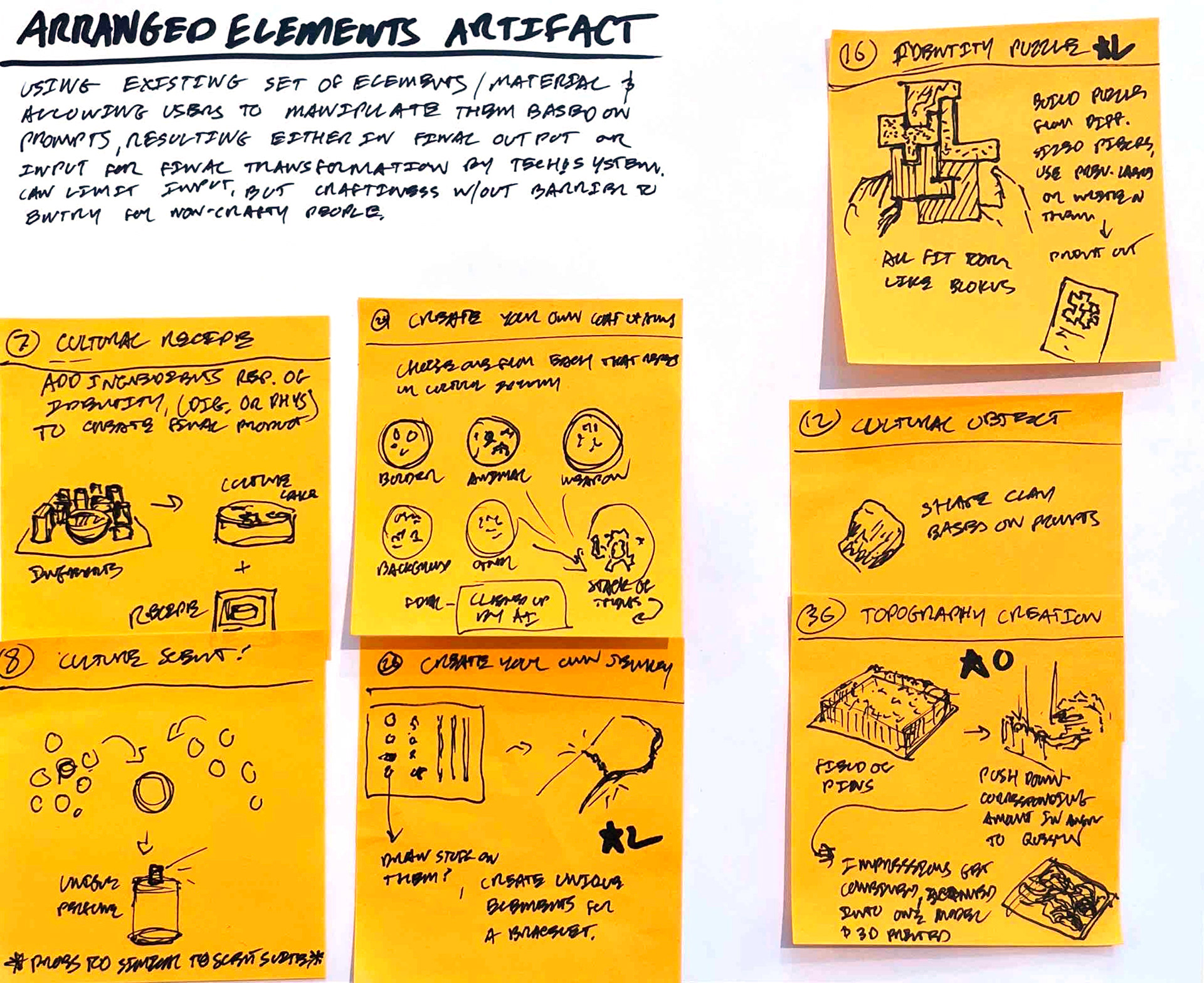
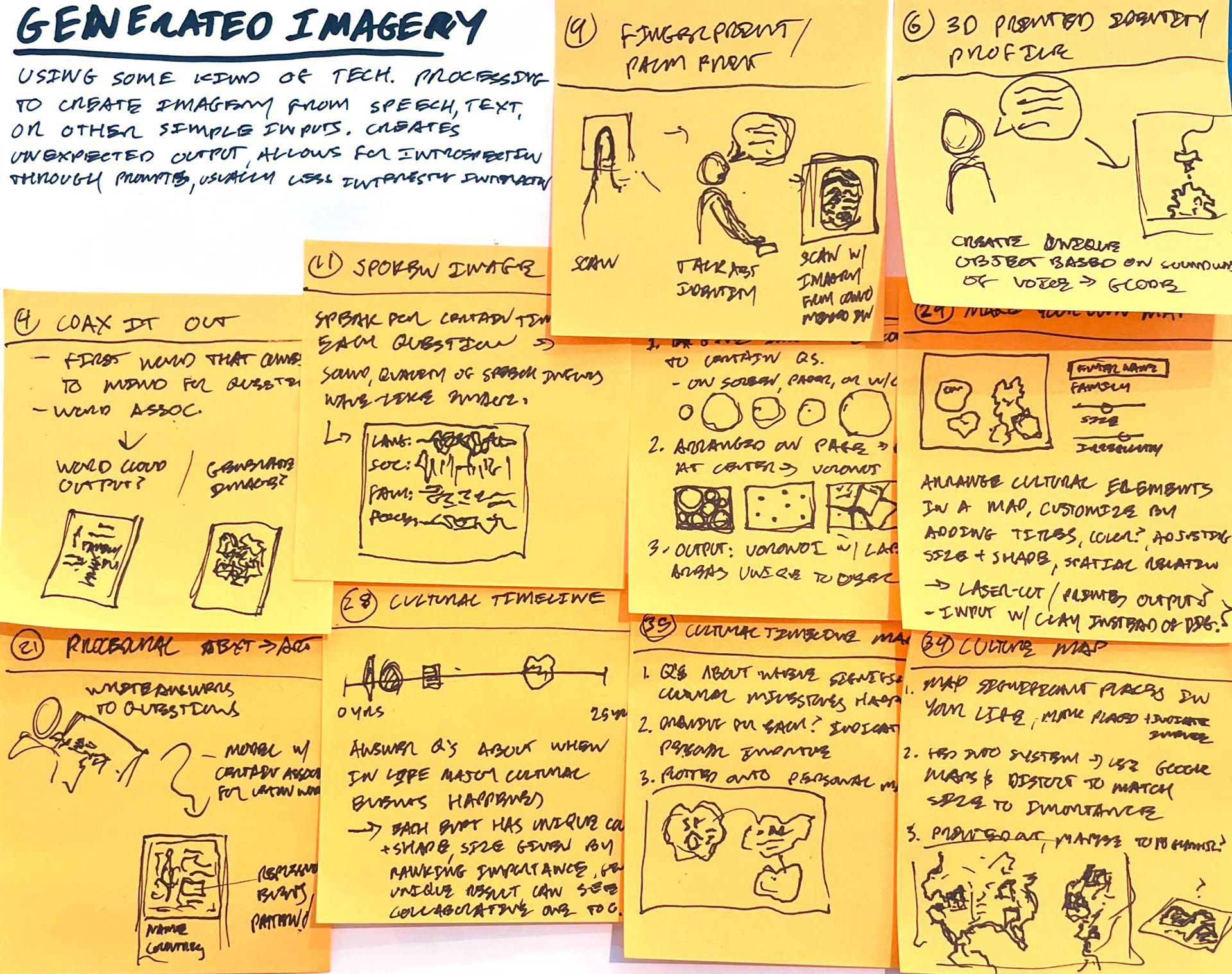
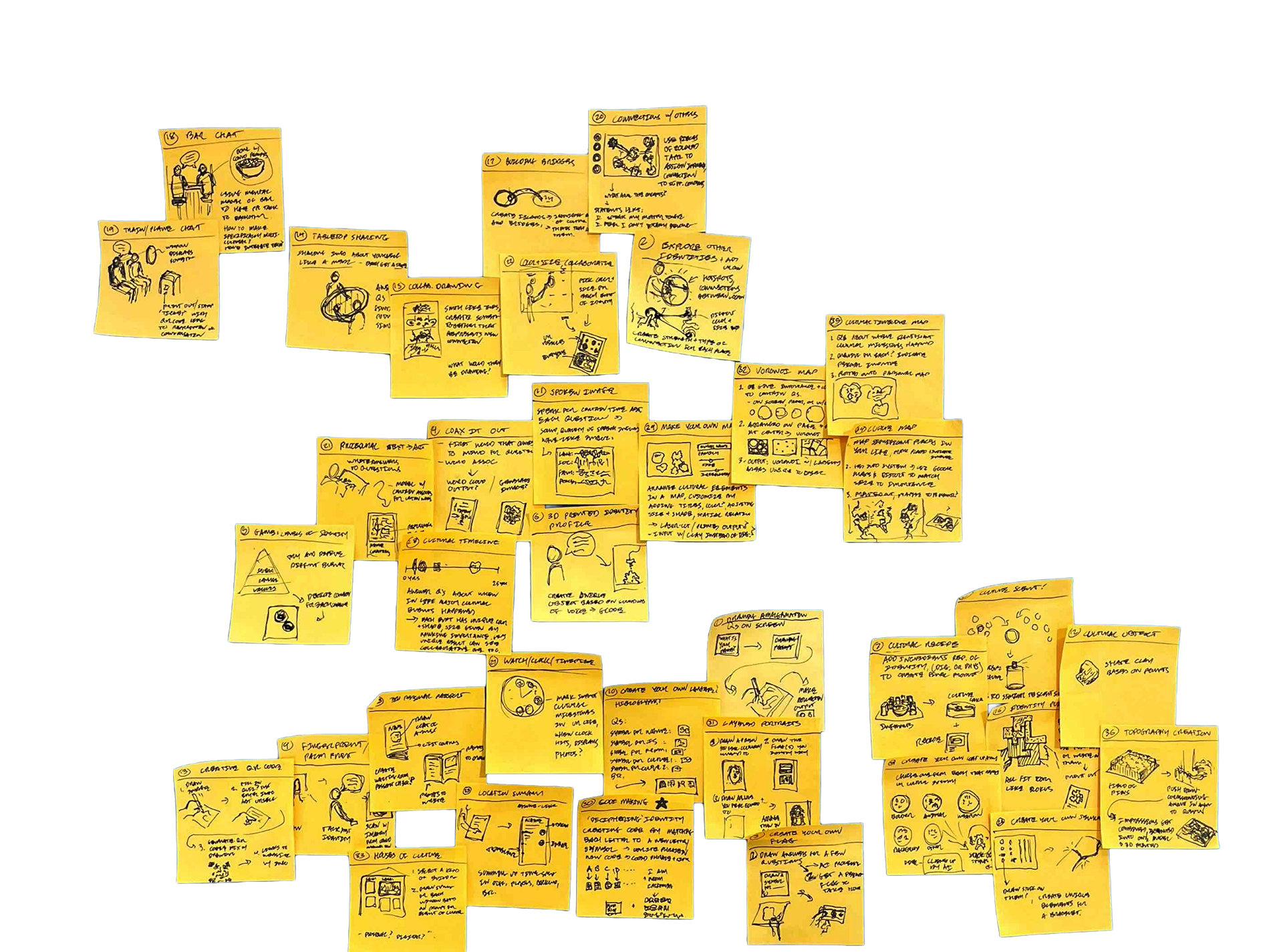
Through rough ideation, trying to put as many ideas down on paper as I could, I generated ideas in a few areas. There were promising concepts in all the directions, so I decided to keep pursuing multiple options.
While generating these ideas, I wanted to get an overview of the thoughts of people with multicultural backgrounds on this project and their identities.
Survey

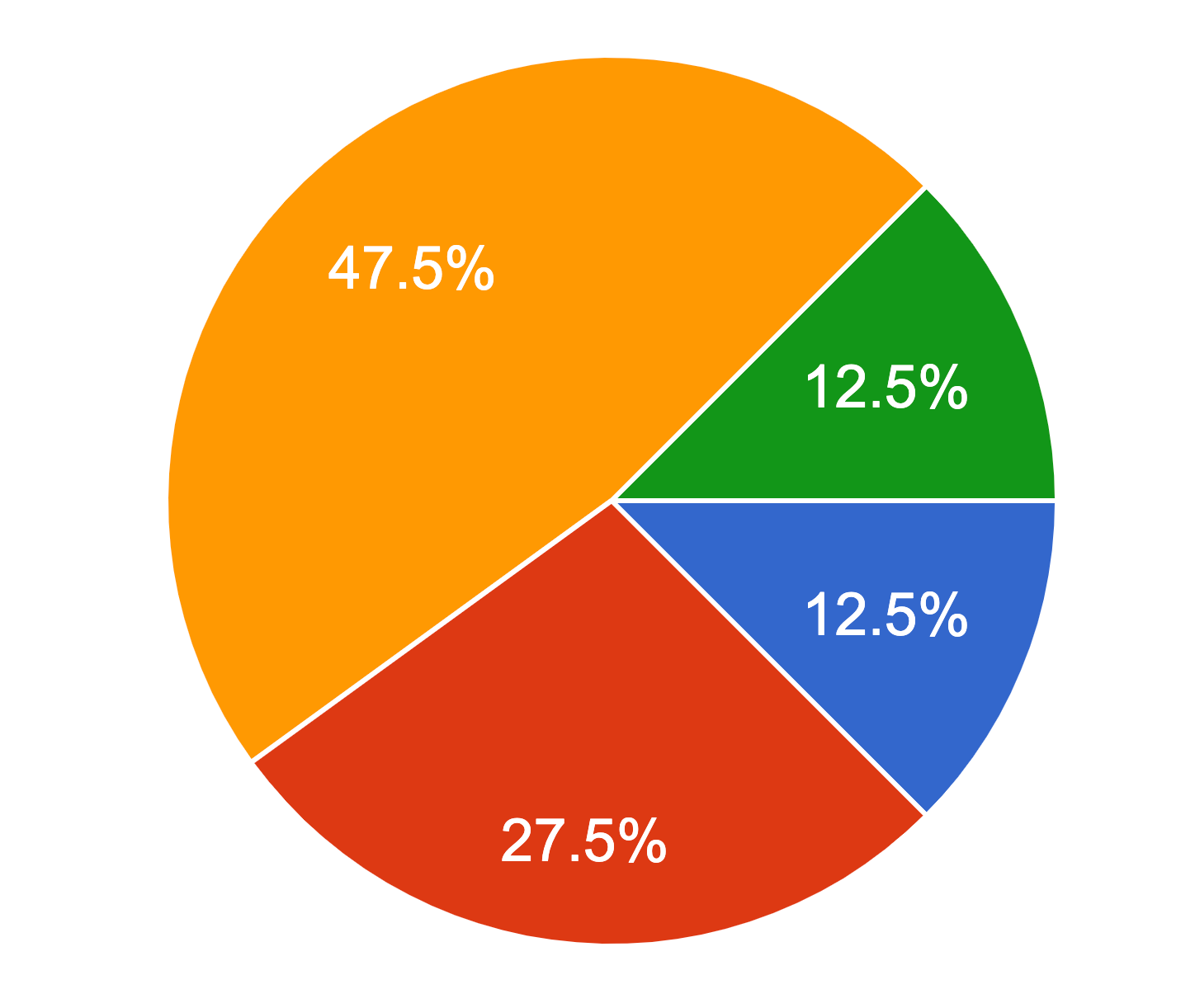

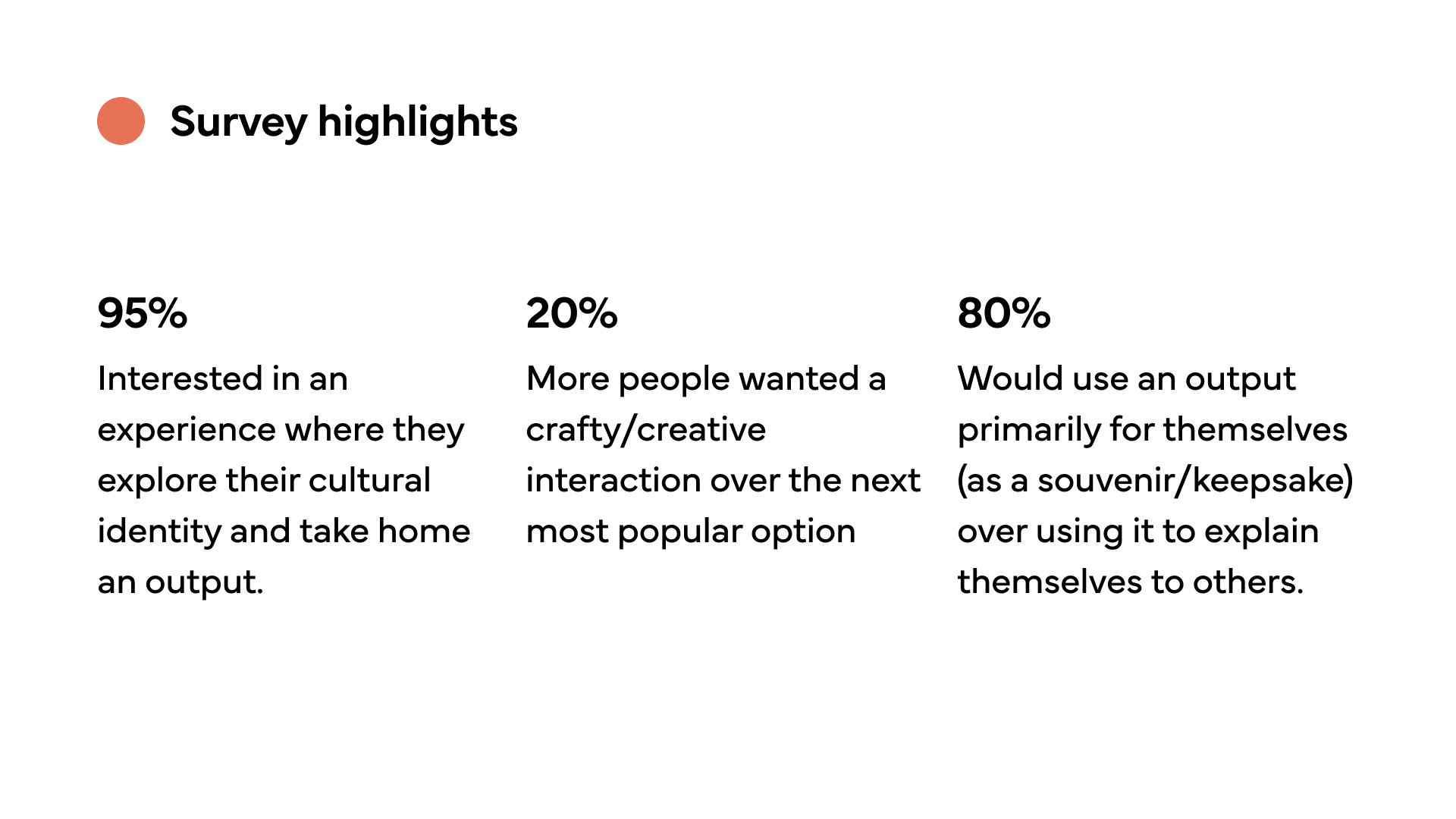
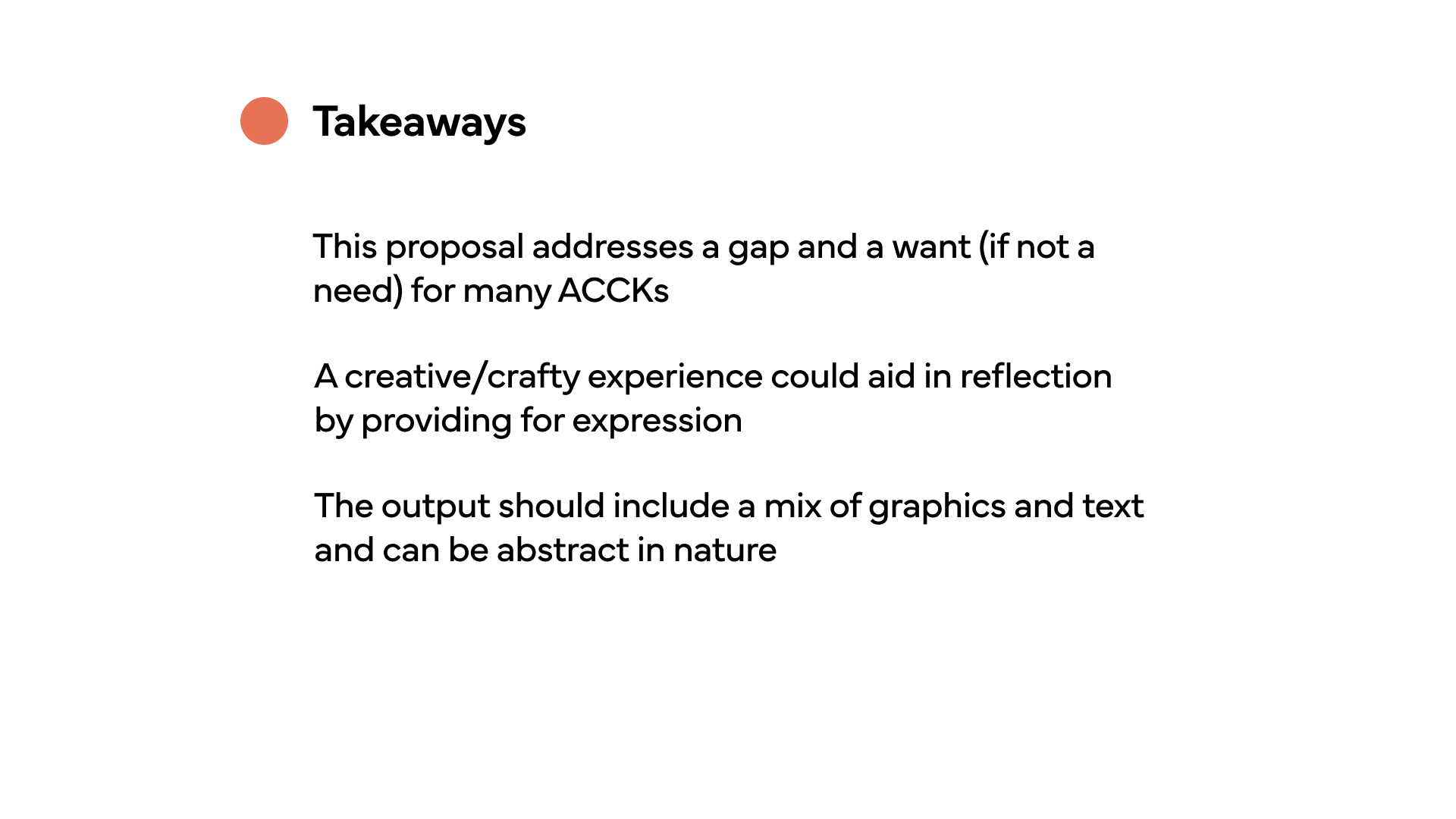
I surveyed a population of mostly college students who felt they belonged to more than one cultural background. Through this and some in-person conversations, I learned some interesting things, among them that few felt an acute lack of belonging or crisis of identity, and that most would want an output for themselves, and not to share with others.
This gave me more direction and inspiration as I was ideating, but it also broadly changed and defined my goal:
Before moving from rough sketches, written goals, and guidelines to more refined concepts, I looked for visual inspiration:
This came in the form of both analogous examples of other interactive
experiences and other sources like cultural graphics, math, data
visualization, and architectural drawings.
experiences and other sources like cultural graphics, math, data
visualization, and architectural drawings.
Concepts

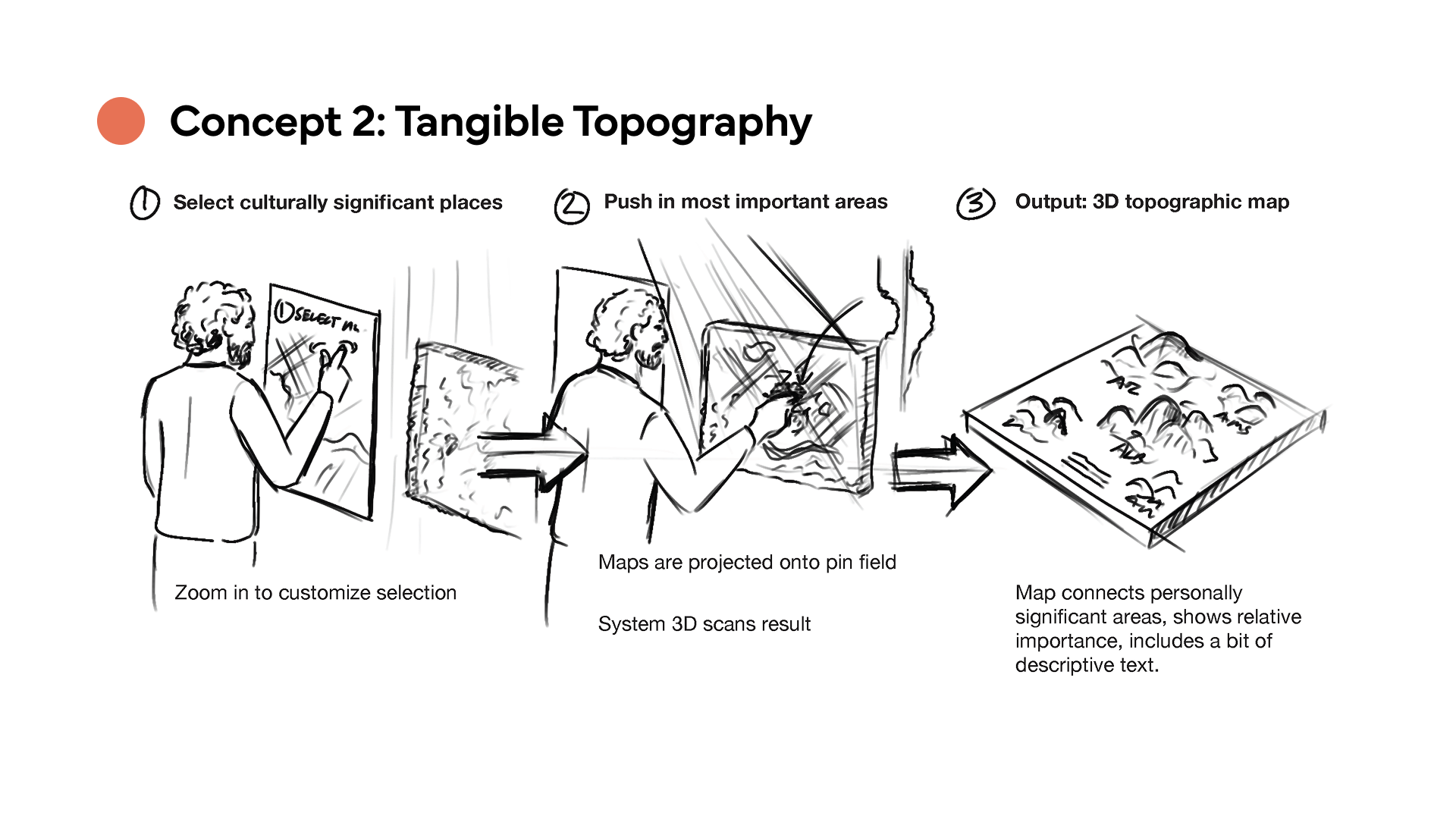

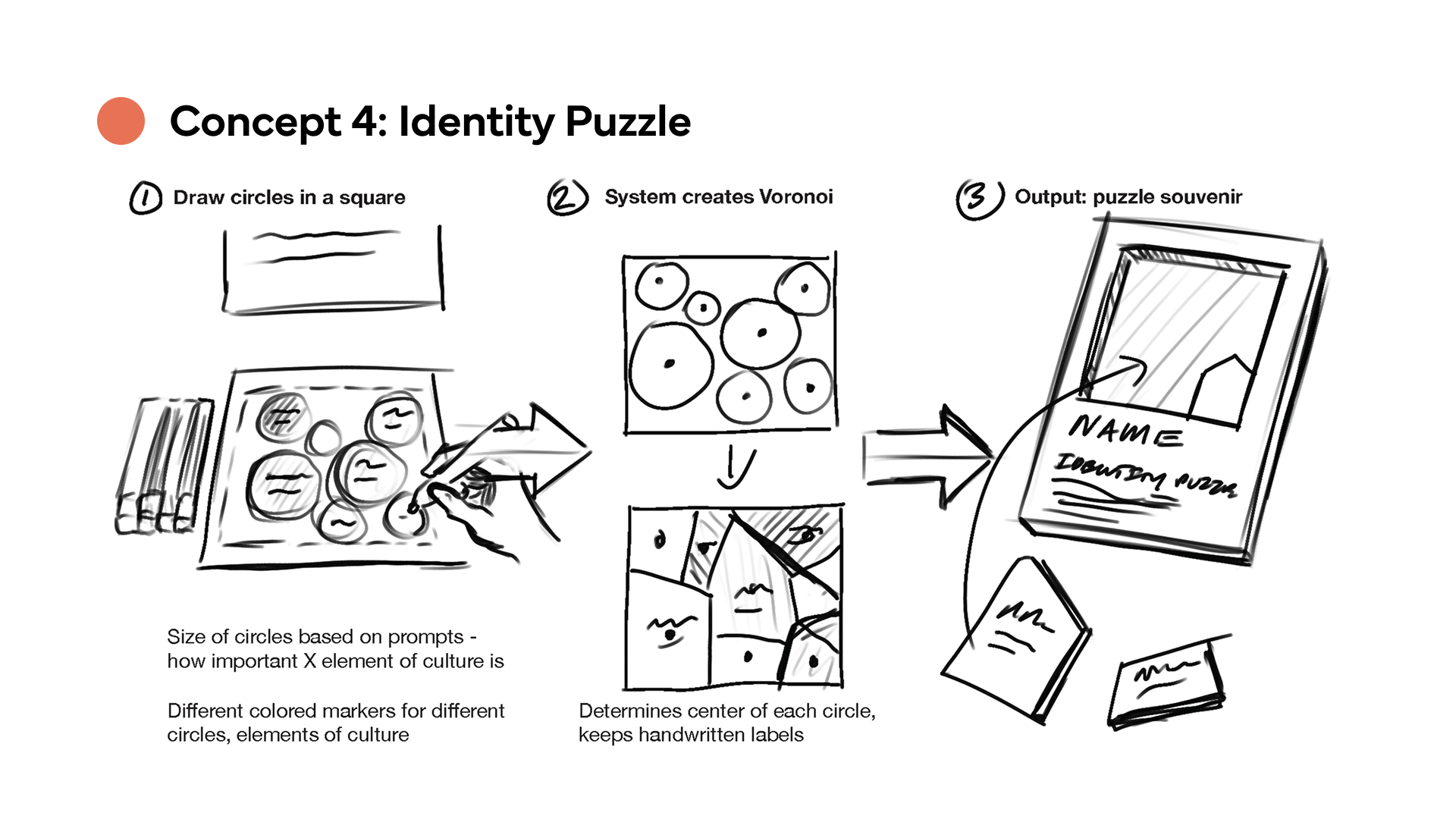
Prototyping + Testing






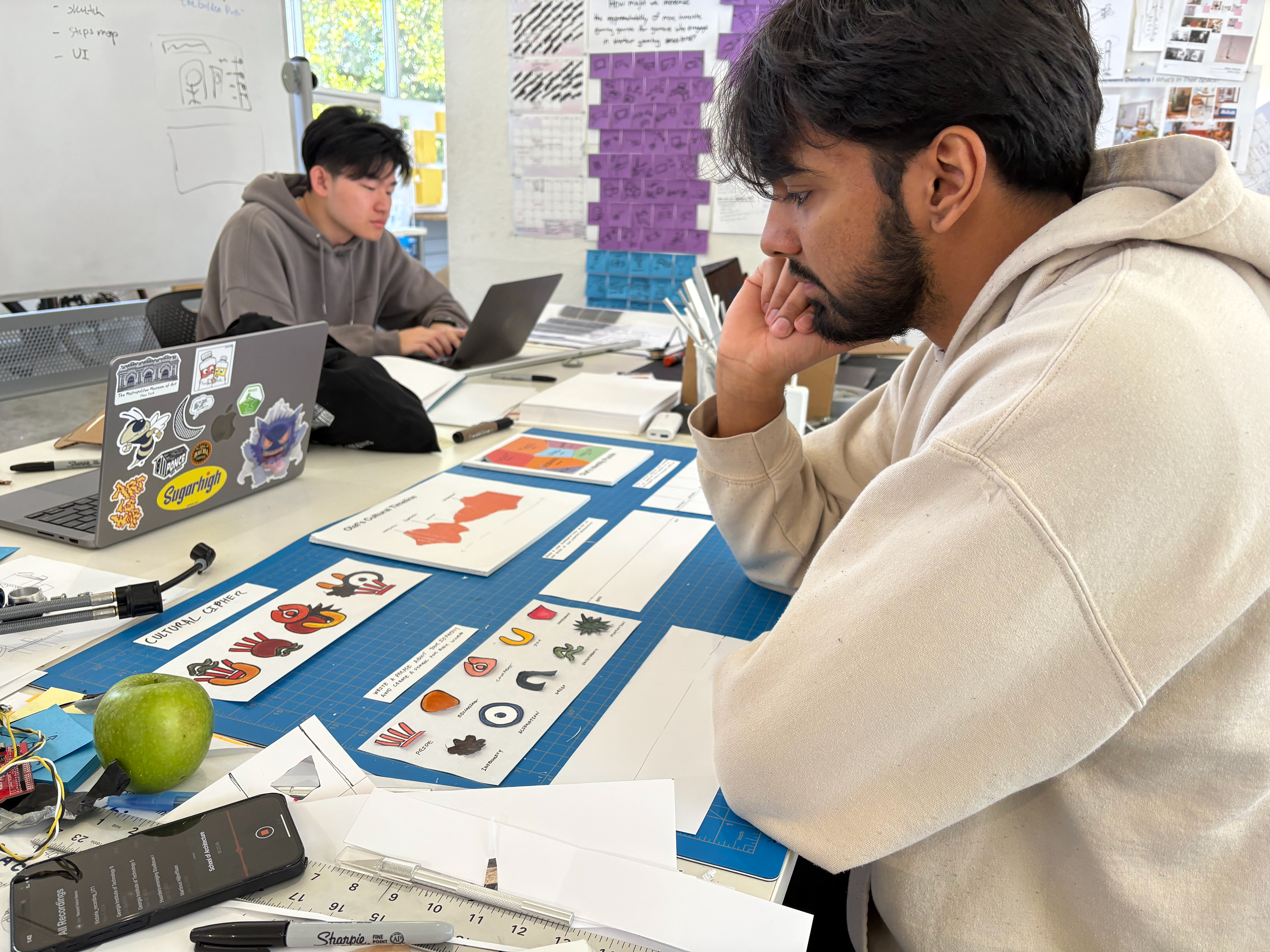
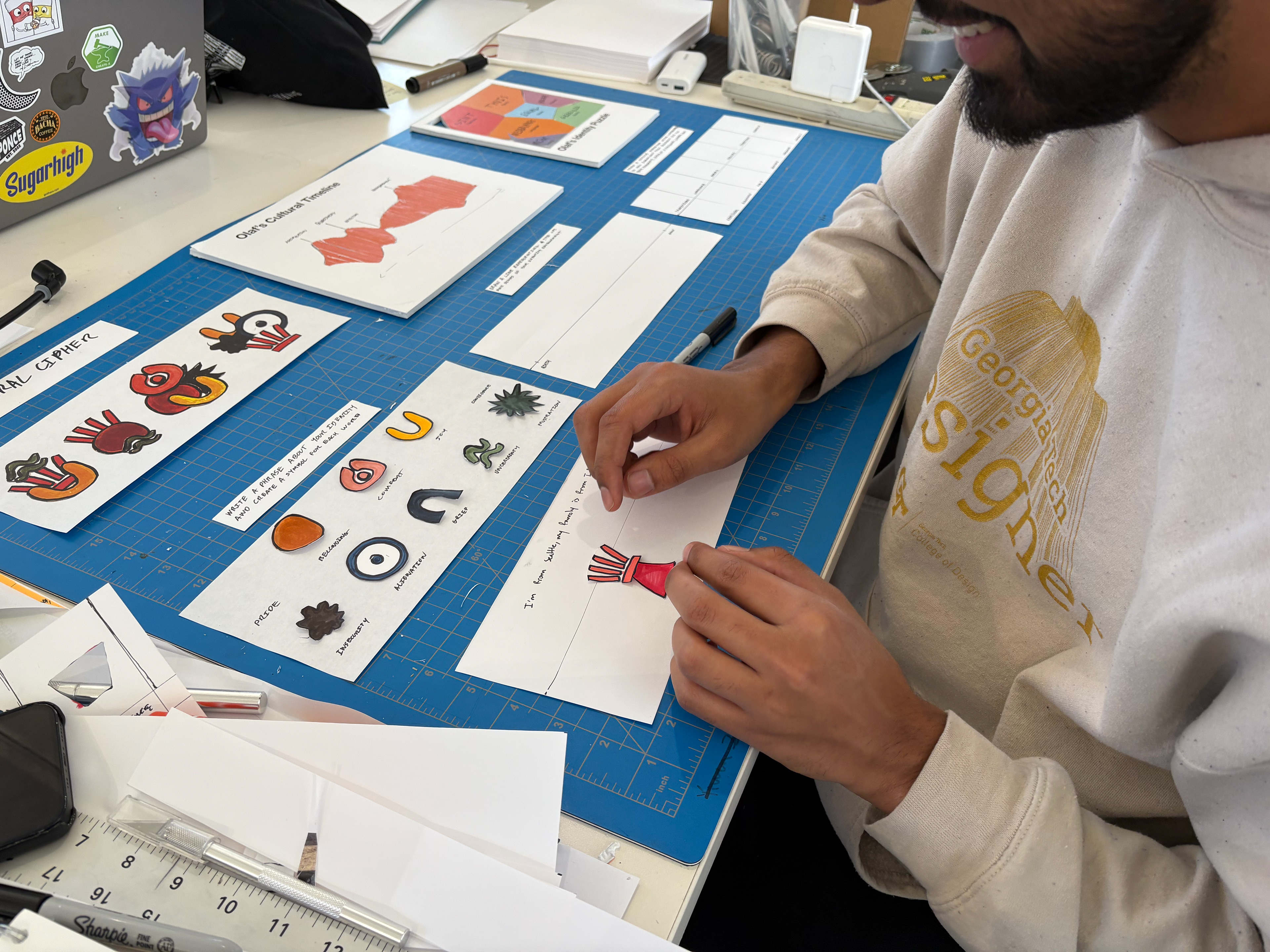
Through multiple rounds of both group and individual feedback and critique, I created versions of the output and input for all of the concepts. I gathered a wide range of opinions, observations, and insights from these sessions.
But how could I choose between these concepts after all this feedback?
Before, during, and after the feedback sessions I refined a set of criteria: what I wanted this design to achieve. These three, together with the general feedback I received, helped me to make a decision.
Choice: Cultural Cipher (Concept 1)*
Met the criteria better than any of the other ideas, though it needed refining to reach its full potential, and I would incorporate elements from the other concepts to make it more engaging and visually compelling.
Refining Final Concept
As I did with the concept prototypes, I started with the output. I felt it needed some work to make it more visually interesting, so I did a lot of experimentation both physically and digitally.
I gradually came to the ring-based system as a more elegant way of combining symbols, and from there refined them and used them in patterning for the walls and the screen backgrounds.
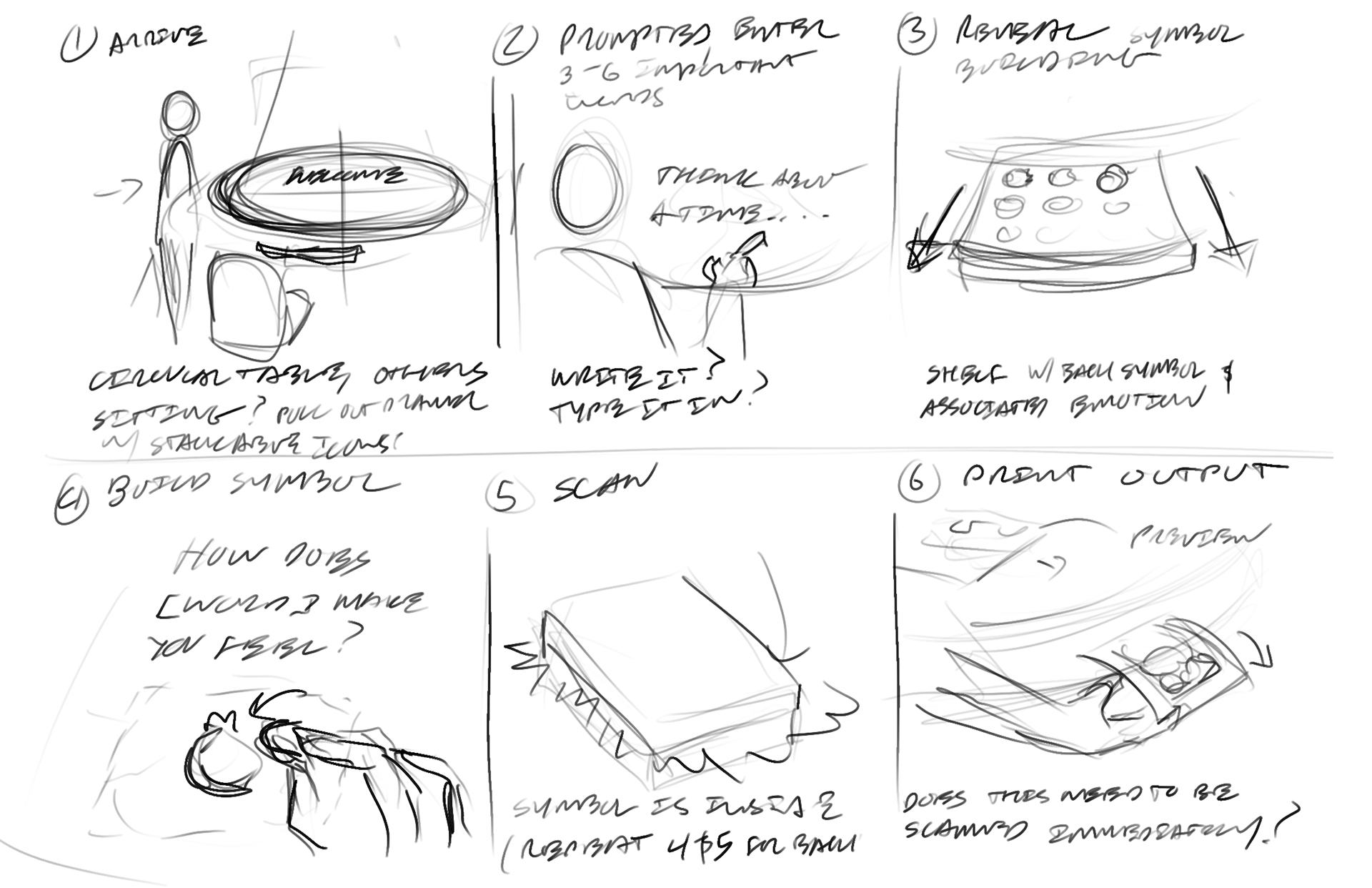
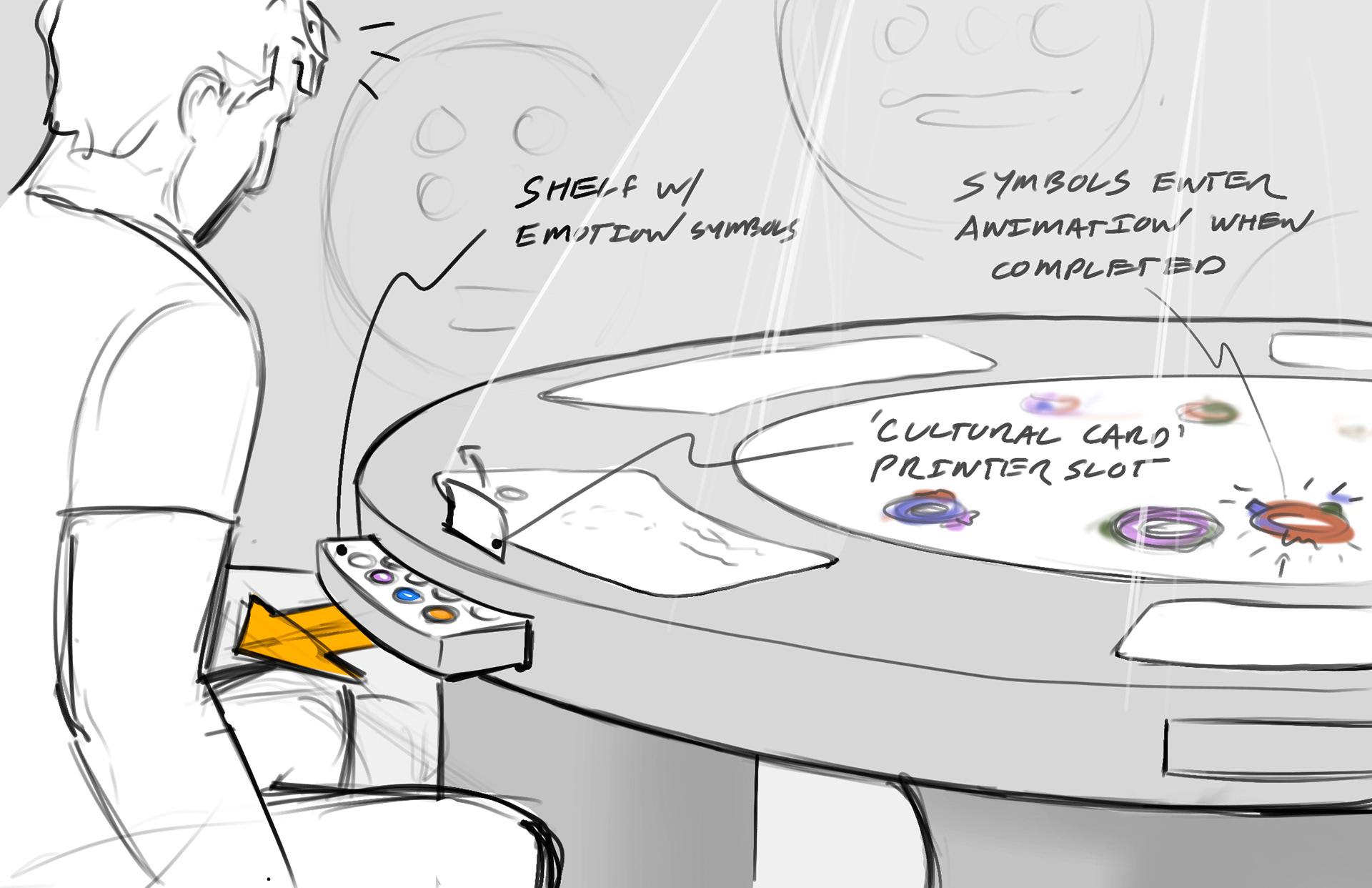

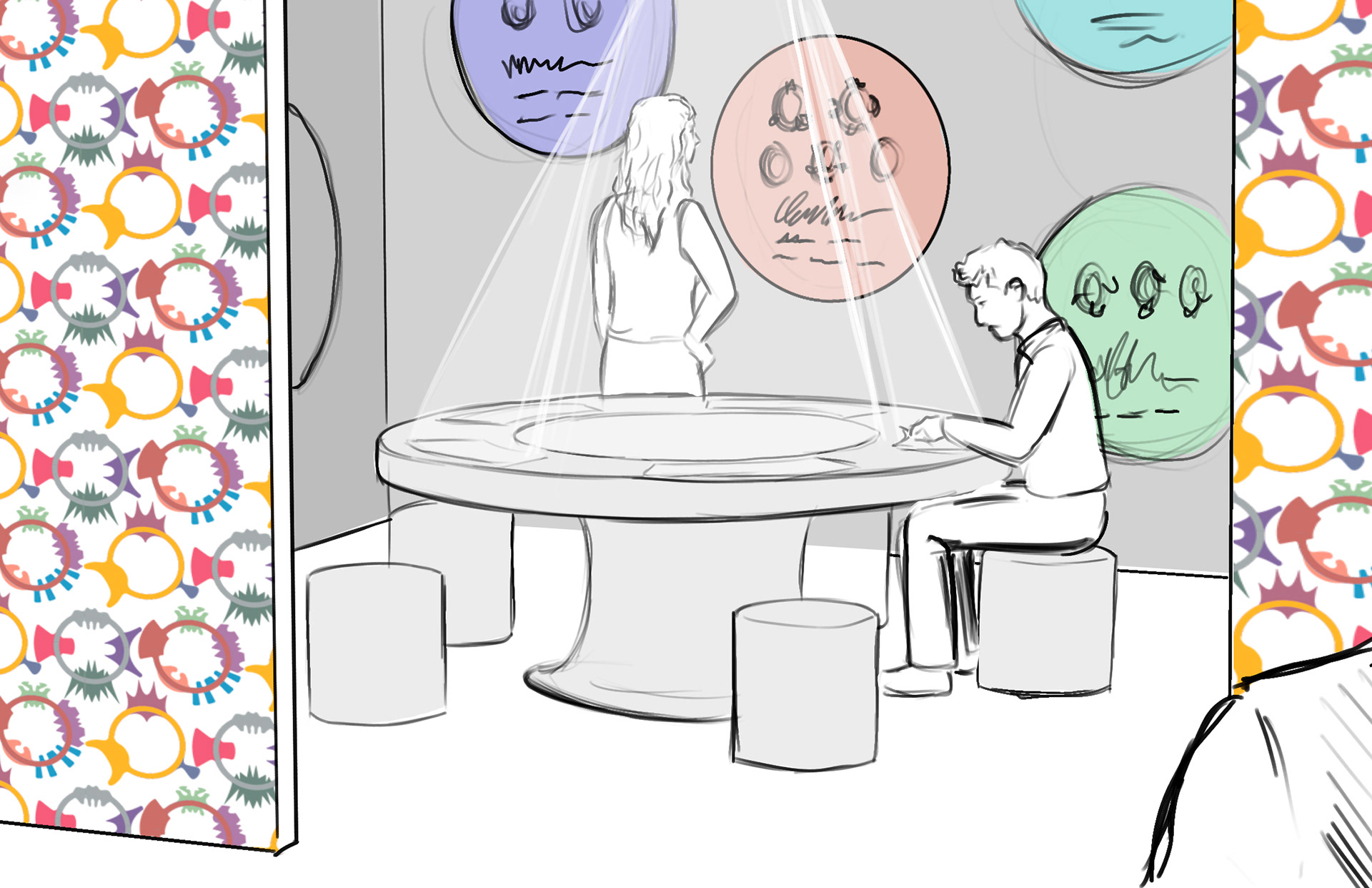
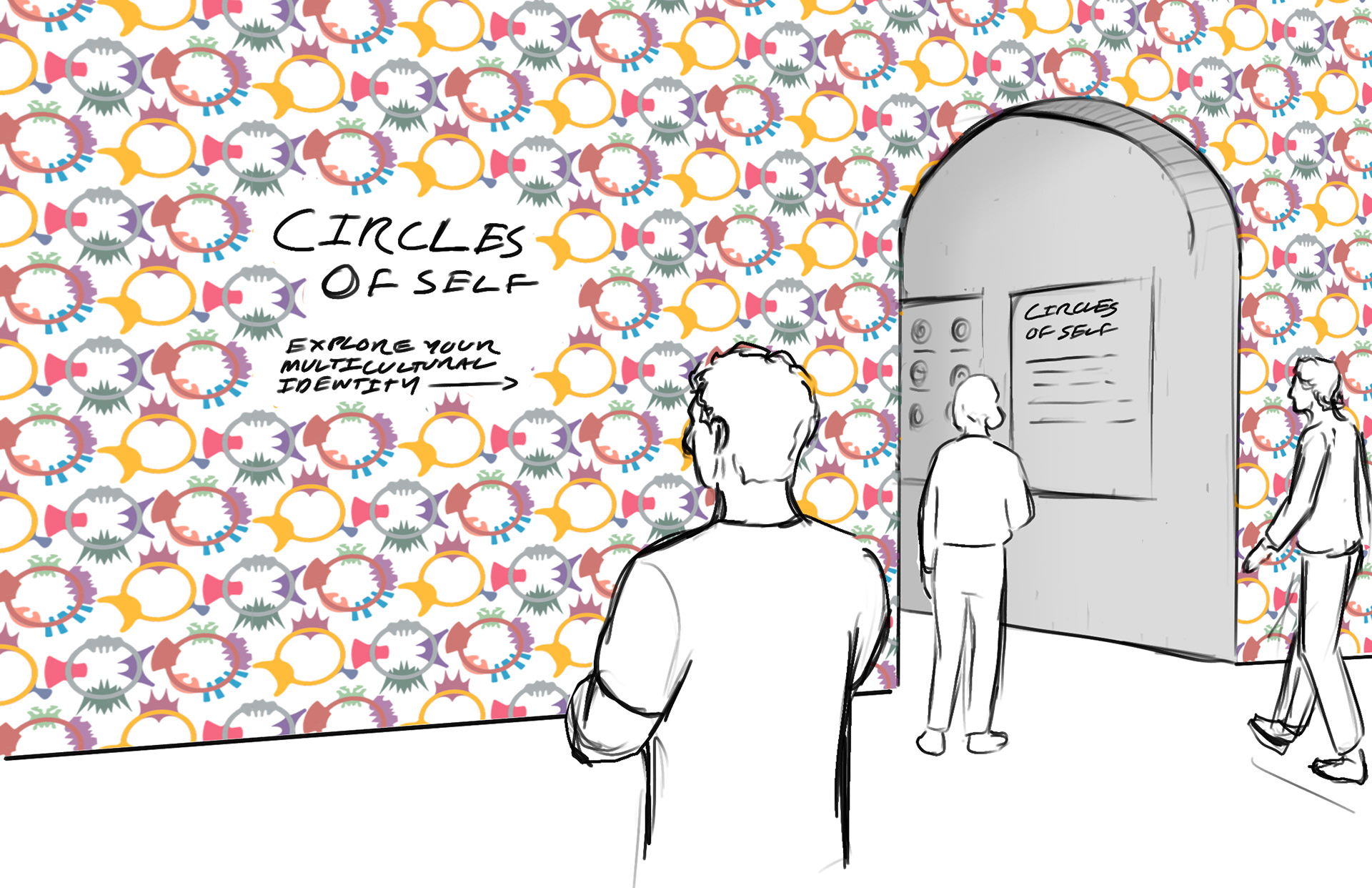
Sketching the space (over a rough CAD model) helped bring the concept to life. The main task remaining was the fleshing out of the on-screen interaction:
After iteration combining hand sketching and digital methods, I landed on the final, circle-based design and started detailing each step of the interaction.
At the same time, I was working on creating a physical prototype, with working magnetic emotion symbols, a section of the roundtable, and samples of the cultural card output printed on card stock.
Building Final Prototype







